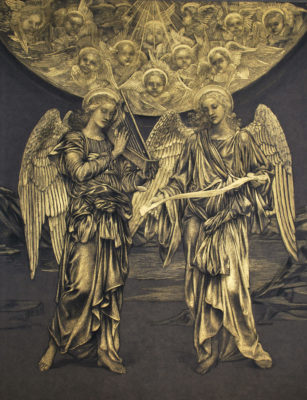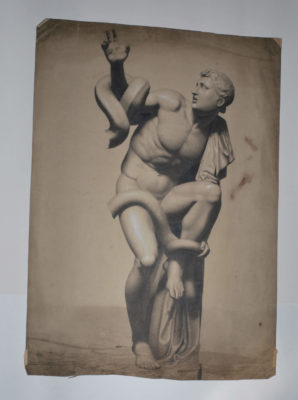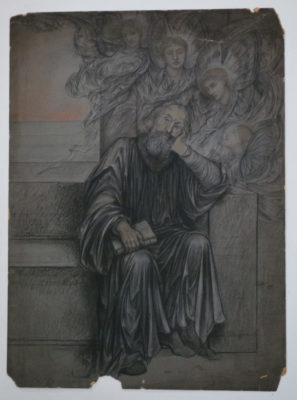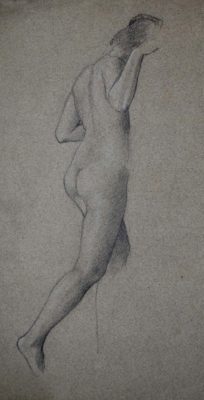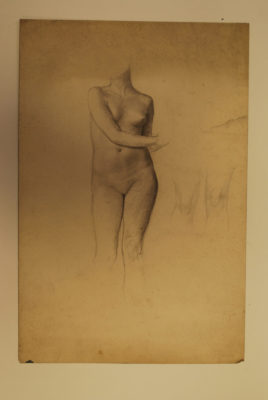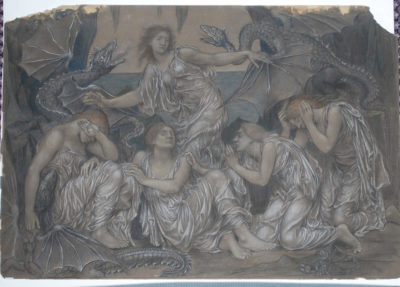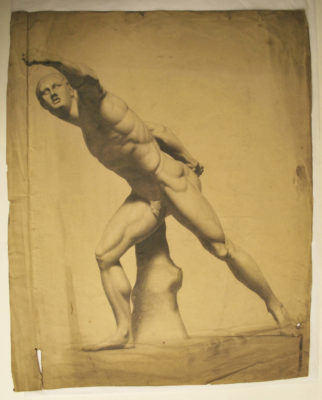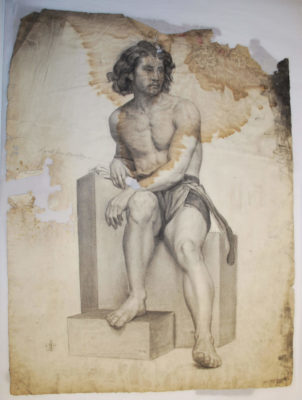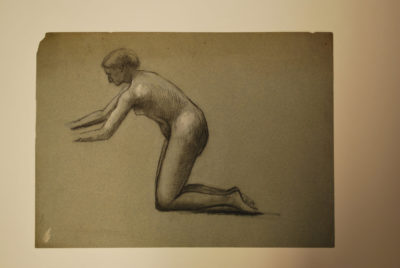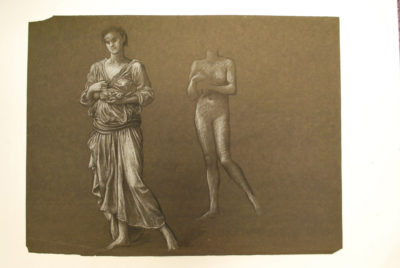Search the De Morgan Collection
Black and gold compositional study for ‘Gloria in Excelsis’
Artist: De Morgan, Evelyn
This compositional study in black and gold for Evelyn De Morgan’s painting ‘Gloria in Excelsis’ can be considered a finished work of art in its own right, which Evelyn would have intended to exhibit and sell. The final oil painting associated with this work is in a private collection. Translated as “Glory to God” the theme of this painting, like many of Evelyn’s works from this period, is religious. In this study the two central angel figures are beautifully executed with wings of bird feathers. In the final oil painting it becomes clear that the wings are made of peacock and golden phoenix feathers, symbolic of immortality and renewal. The earth bound angels communicate with the highest order of angels (the six winged seraphim) with the use of the harp, which is a representation of the unifying of earth and heaven or inner spirituality and outer physicality, and thus a symbol which would have appealed greatly to Evelyn. In ‘Gloria in Excelsis’ the seashore is metaphoric, the rocky outcrop where the angels are situated seems desolate and yet in the final painting spring flowers symbolising hope and renewal are emerging from the otherwise barren ground where the angels tread.
Study of ‘Laocoon and his Sons’, drawing from the antique
Artist: De Morgan, Evelyn
The statue of Laocoön and His Sons (also called the Laocoön Group) depicts the Trojan priest Laocoön and his sons being attacked by sea serpents. It is considered to be the prototypical icon of human agony in Western art. It was excavated in Rome in 1506 and placed on public display in the Vatican. The discovery of the Laocoön made a great impression on Italian artists. Michelangelo is known to have been particularly impressed by the massive scale of the work and its sensuous aesthetic, particularly its depiction of the male figures. The Laocoön Group rapidly became known all over Europe through small reproduction models and prints and its importance for artists continued into the Victorian period. Evelyns study of this painting concentrates on a section of the overall group and depicts one of the sons becoming entwined with and constricted by a serpent. The rendering conforms with Michelangelos reading of the work and concentrates on the muscular beauty of the boys form, the sensuous smoothness of the marble and the three-dimensionality of her subject matter which she portrays through her use of textured shading and chiaroscuro – or strong contrasts between light and dark.
Study of St Jerome, seated male figure in drapery
Artist: De Morgan, Evelyn
Study of female nude for ‘The Grey Sisters’
Artist: De Morgan, Evelyn
Life studies of a female nude, for ‘The Grey Sisters’. Charcoal and white pastel on grey paper.
Study of female nude for ‘The Christian Martyr’
Artist: De Morgan, Evelyn
Compositional study for ‘The Captives’, females in drapery
Artist: De Morgan, Evelyn
Study of an antique statue of a male nude, the ‘Borghese Warrior’, ancient Greek statue
Artist: De Morgan, Evelyn
Study of a seated male nude
Artist: De Morgan, Evelyn
Life study of a female nude
Artist: De Morgan, Evelyn
Study for ‘St Christina Giving Her Father’s Jewels to the Poor’, female
Artist: De Morgan, Evelyn


